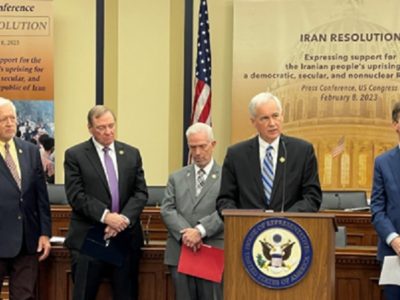WASHINGTON — In the picture, victory is portrayed by the winner’s arms thrust wide in celebration, a boot near the head of a fallen enemy.
It’s not another photograph of U.S. troops in Afghanistan showing another “serious error in judgment.” It’s a painting that still hangs in the Kansas Statehouse in Topeka, and it shows Civil War-era anti-slavery crusader John Brown expressing the joy of victory after a brutal fight.
With the publication Wednesday of the latest photos of U.S. soldiers mistreating dead enemies, it is a reminder that while posing for such photos might show a lack of judgment, it is hardly a new idea. The photos published by the Los Angeles Times, which obtained them from a member of the 82nd Airborne Division based at Fort Bragg, N.C., were taken in 2010 and show members of the unit posing with the bodies of dead insurgents, the newspaper said.
While senior U.S. officials from President Barack Obama on down expressed outrage and regret, Defense Secretary Leon Panetta noted at a news conference, “This is war. And I know that war is ugly and it’s violent.”
Panetta went on to say that he was in no way excusing the behavior of the soldiers, which he said was against American values. It was the latest controversial incident to mar the Obama administration’s effort to engineer an orderly withdrawal from Afghanistan, coming just days after insurgents staged daylong attacks on Kabul and three provincial capitals that left several Afghan soldiers, police and civilians dead.
But many agree that Panetta’s point had to be made. The publication of the photos Wednesday – one of which shows U.S. soldiers with Afghan police gathered around the mutilated legs of a suicide bomber – followed the surfacing of a video in January that showed Marines urinating on corpses in Afghanistan.
Former soldiers called the Pentagon asking officials to put the issue into perspective, noting that it wasn’t many wars ago when a victorious officer would pose in front a pile of dead enemies.
The fact that there is ample evidence of similar actions, as Panetta noted, doesn’t excuse such actions. But it does lend some context.
It might also explain why there didn’t appear to be much of a public reaction in Afghanistan. After a decade of the U.S. at war, the list of such photos grows. The first to cause a furor: military guards at the Abu Ghraib prison in Iraq were shown torturing inmates, leading one on a leash and collar in one photo, and being piled, nude, on top of each other in other photos that surfaced in 2004.
All the new images violate the Geneva Conventions prohibition against desecrating the dead, which also notes that the dead should be treated with respect. The new photos, while chilling to many, hardly raised the bar for questionable conduct in wartime.
Prior to their publication, Pentagon officials asked the Los Angeles Times not to run the photos, but the newspaper’s editor, Davan Maharaj, said that “we decided that publishing a small but representative selection of the photos would fulfill our obligation to readers to report vigorously and impartially on all aspects of the American mission in Afghanistan.”
Pentagon spokesman George Little said, “The danger is that this material could be used by the enemy to incite violence against U.S. and Afghan service members in Afghanistan.” He added that the photographs “by no means represent the values or professionalism of the vast majority of U.S. troops serving in Afghanistan today.”
An investigation was under way, Little said, and “anyone found responsible for this inhuman conduct will be held accountable in accordance with our military justice system.”
The U.S. ambassador to Afghanistan, Ryan C. Crocker, said, “The actions were morally repugnant, dishonor the sacrifices of hundreds of thousands of U.S. soldiers and civilians who have served with distinction in Afghanistan, and do not represent the core values of the United States orhttp://www.kansascity.com/2012/04/18/3562492/new-afghanistan-war-photos-part.html#storylink=rss our military.”







